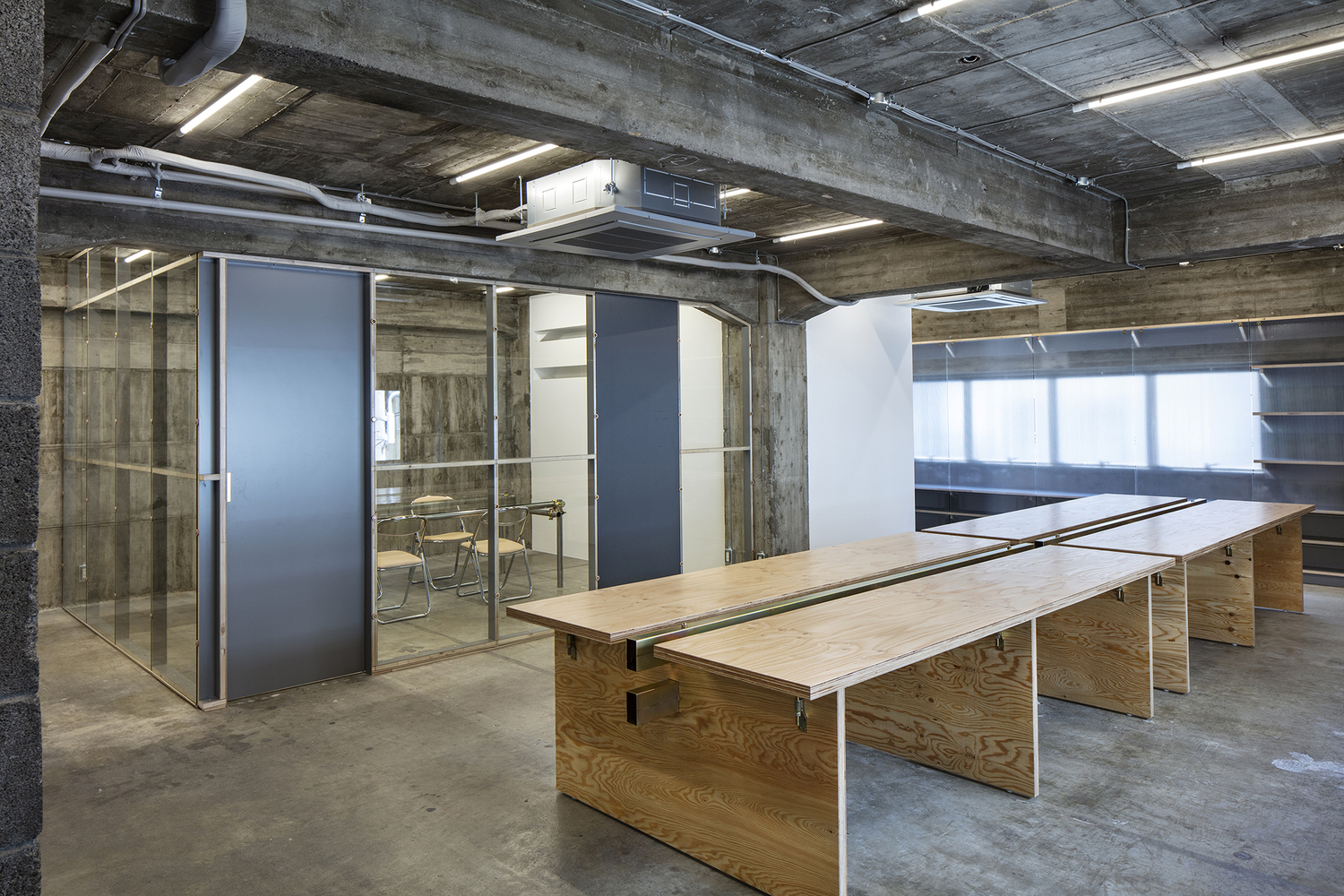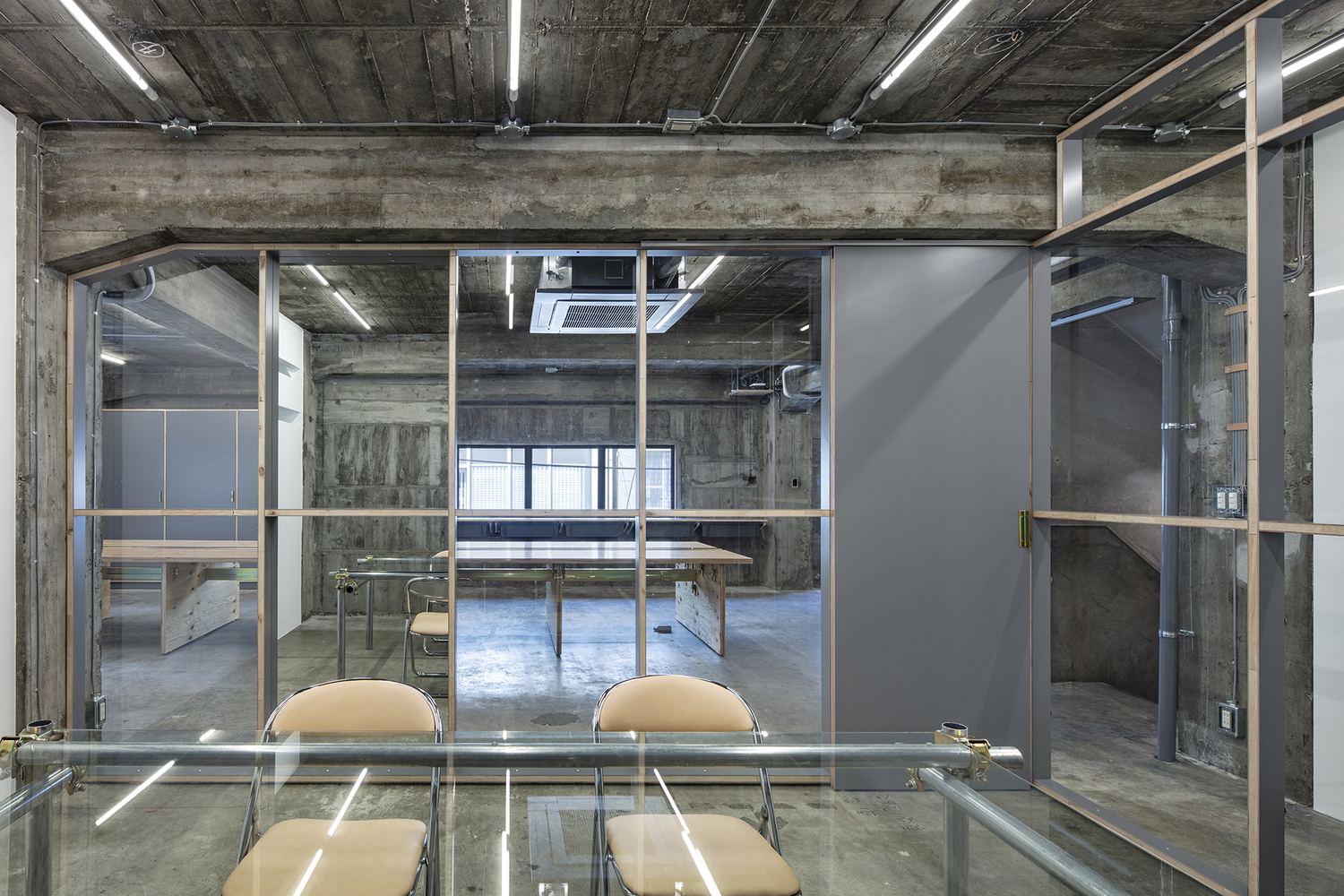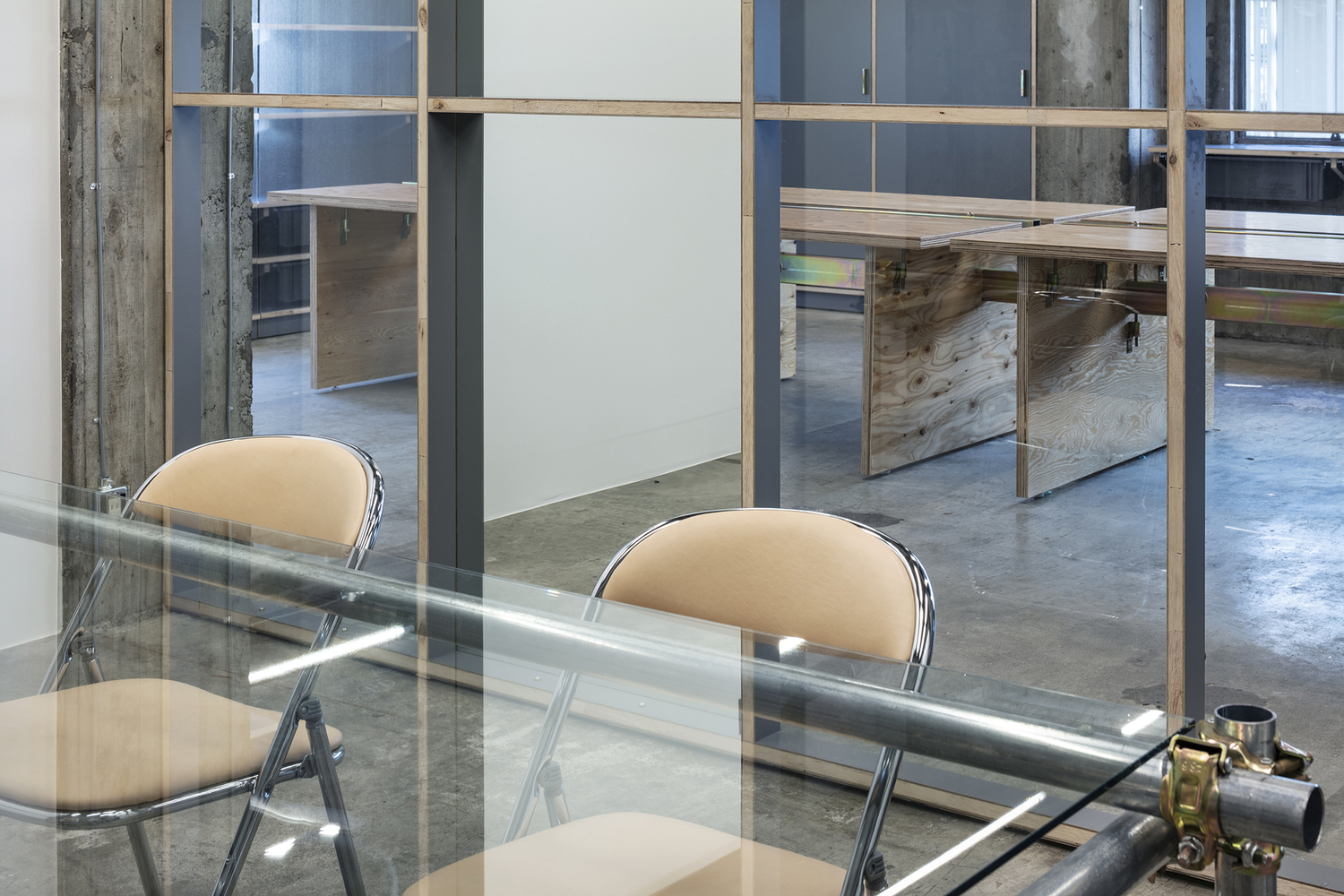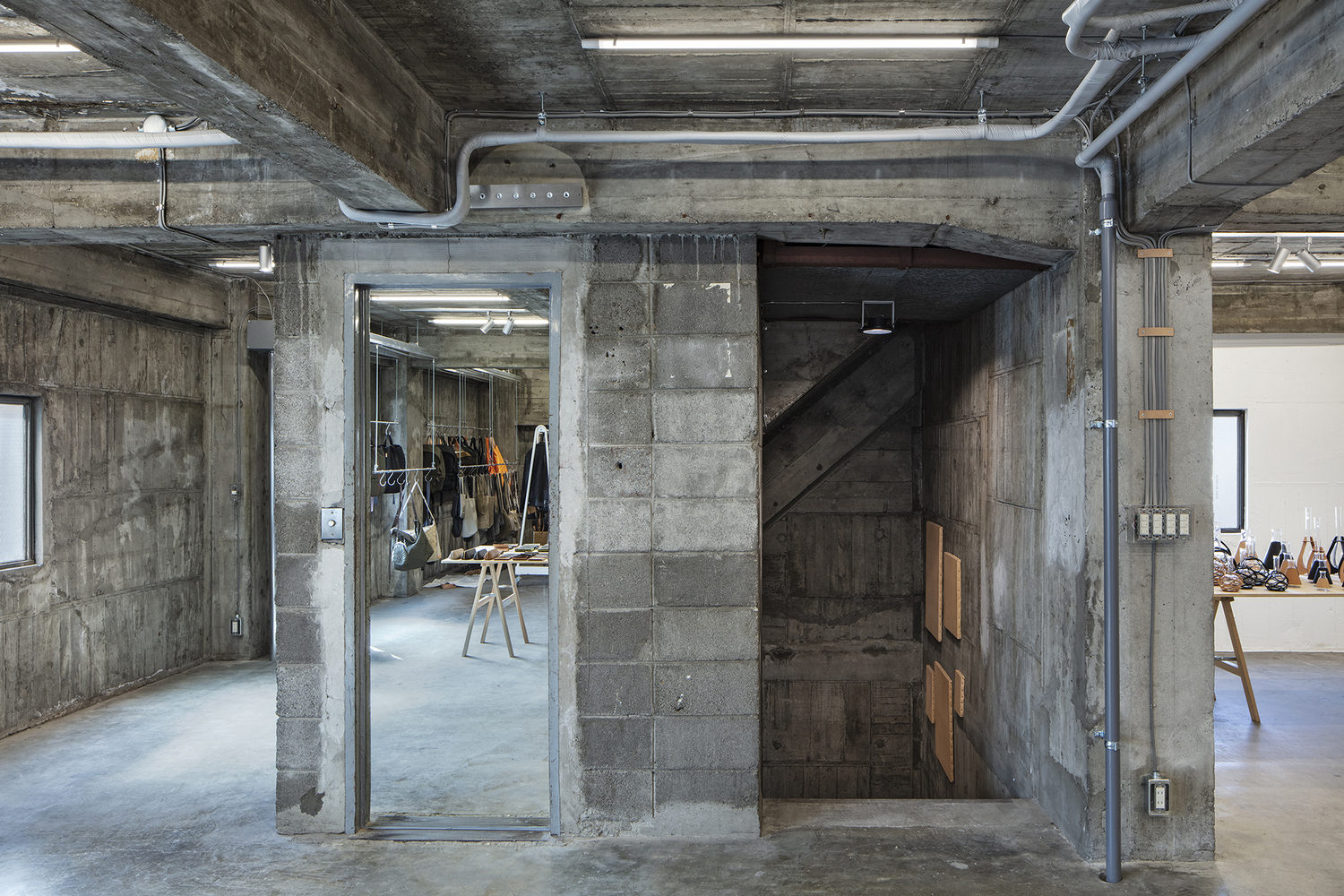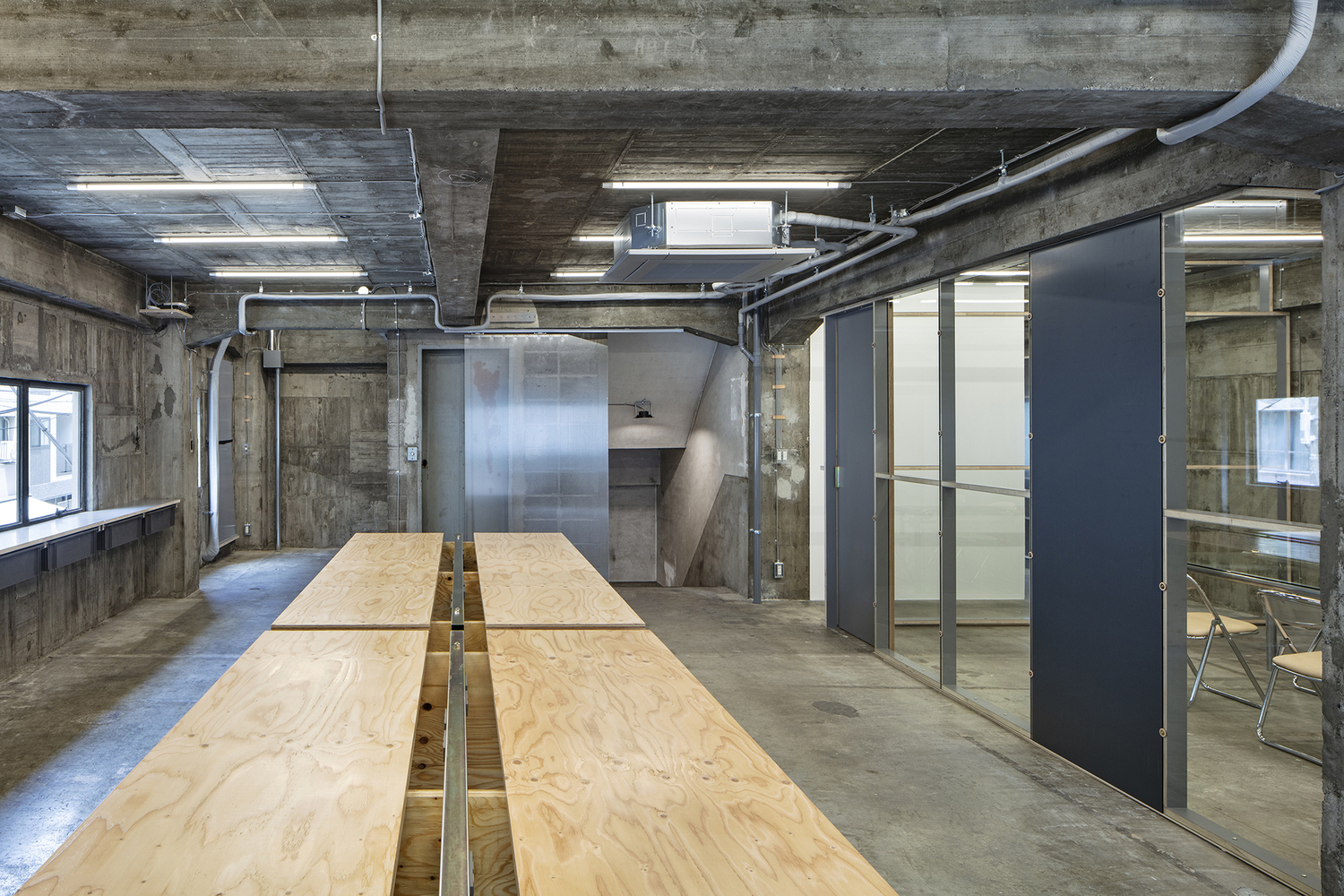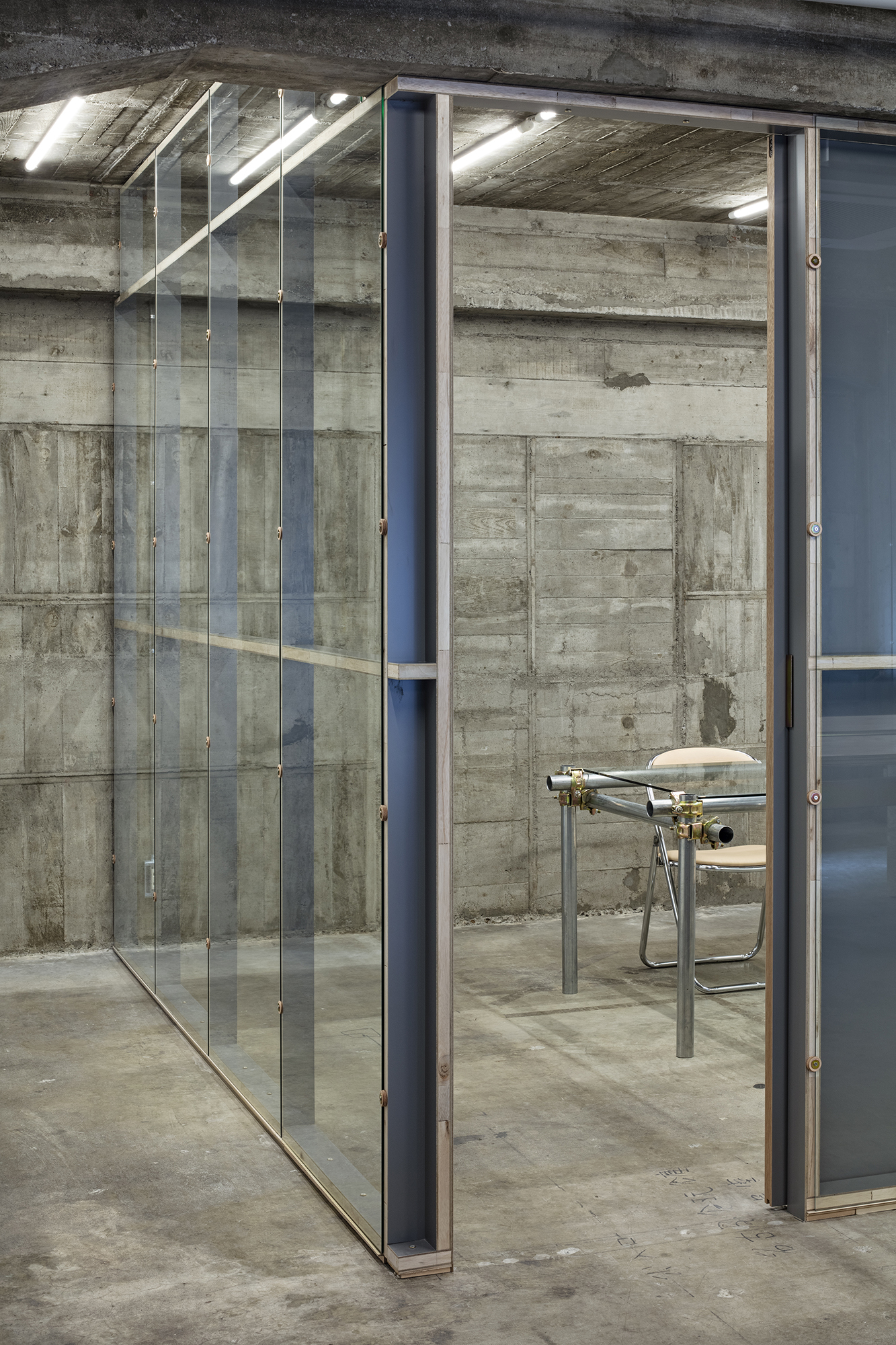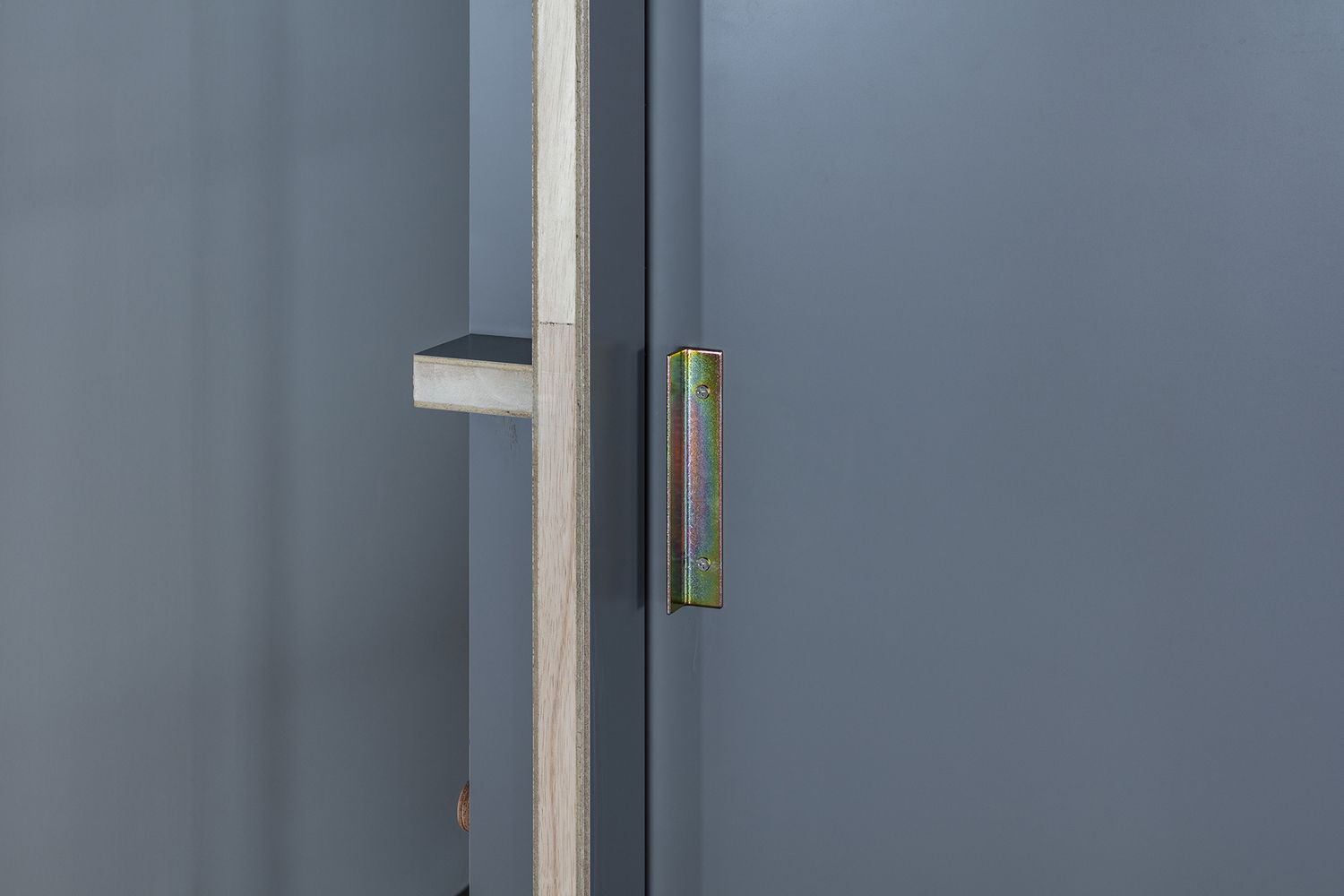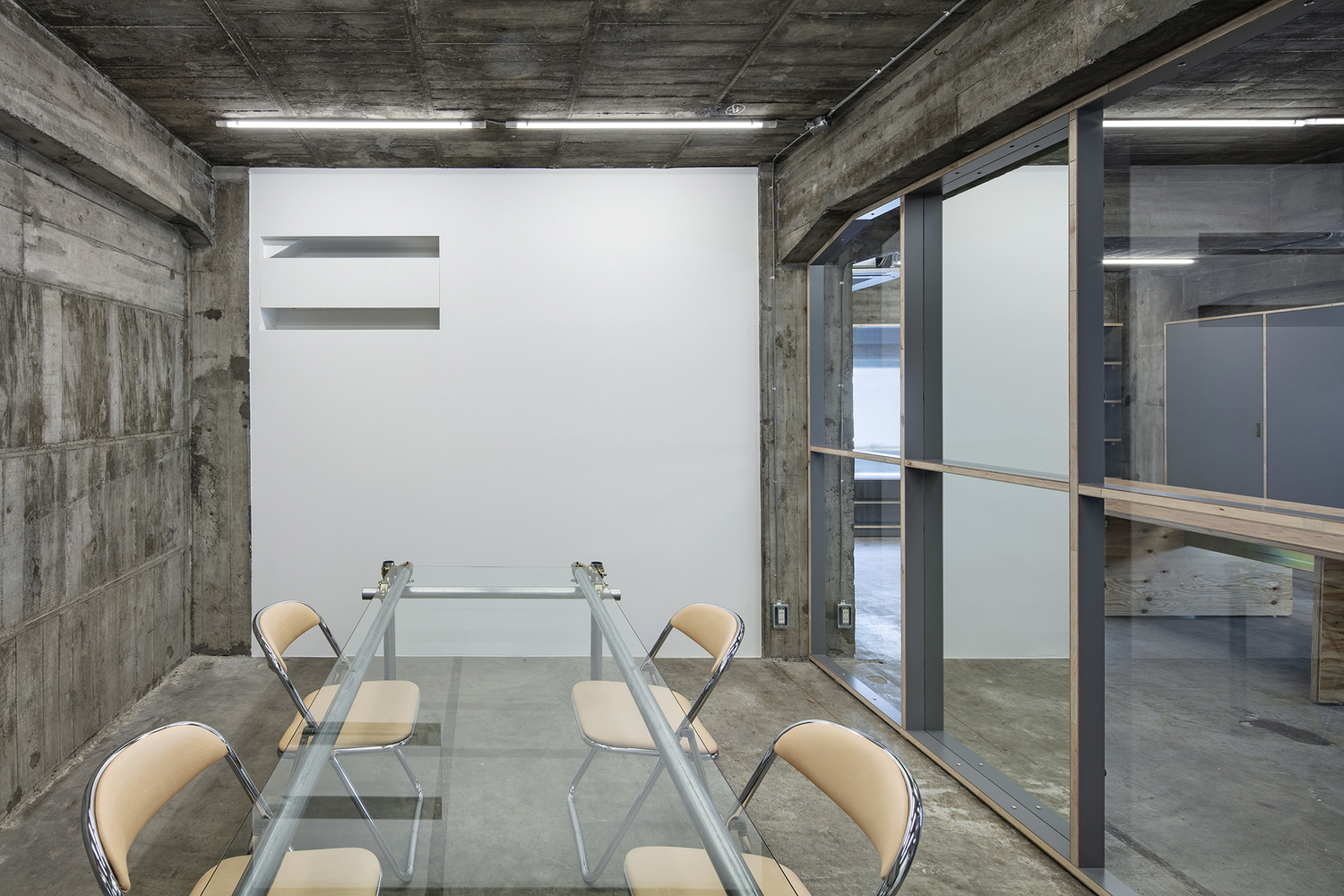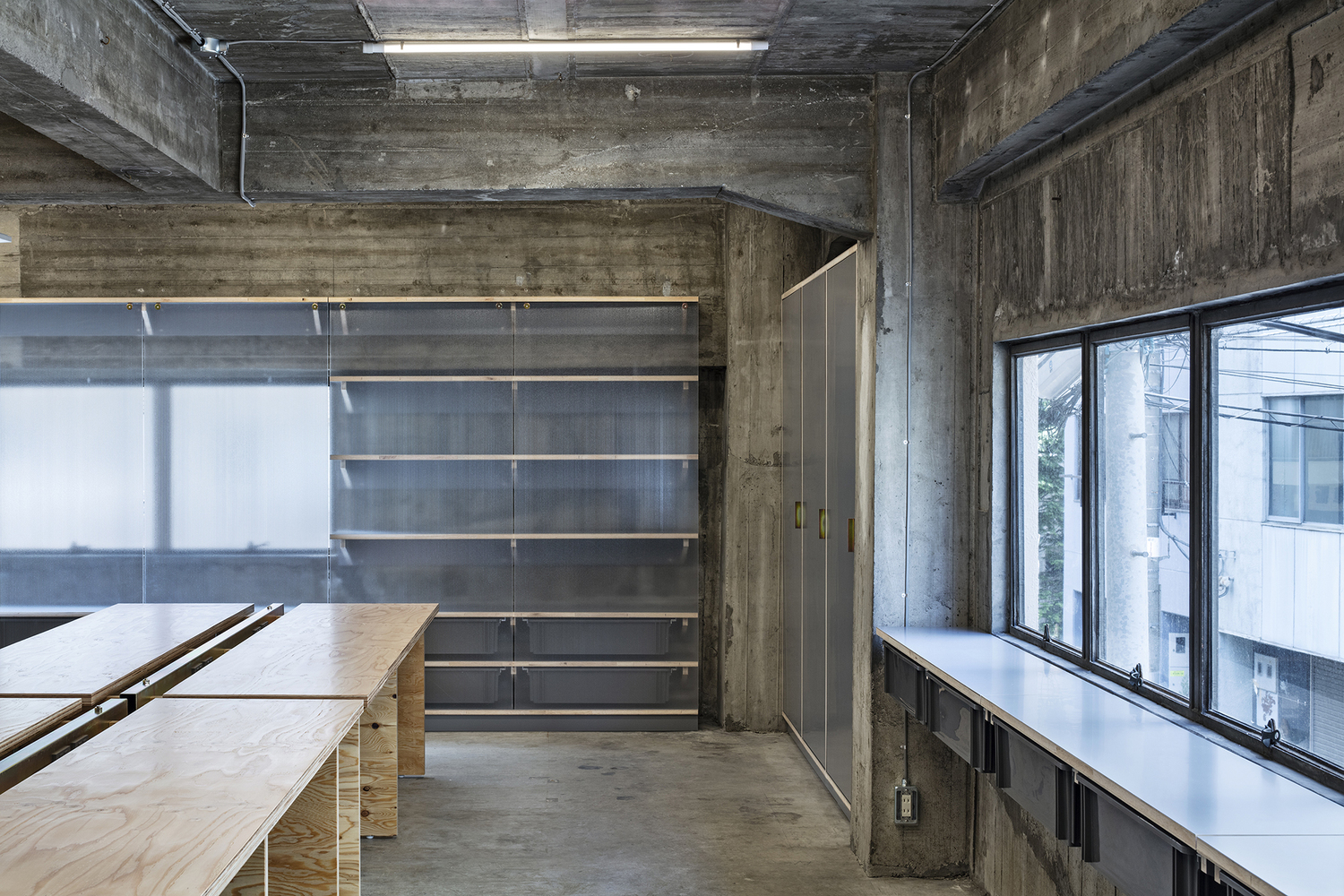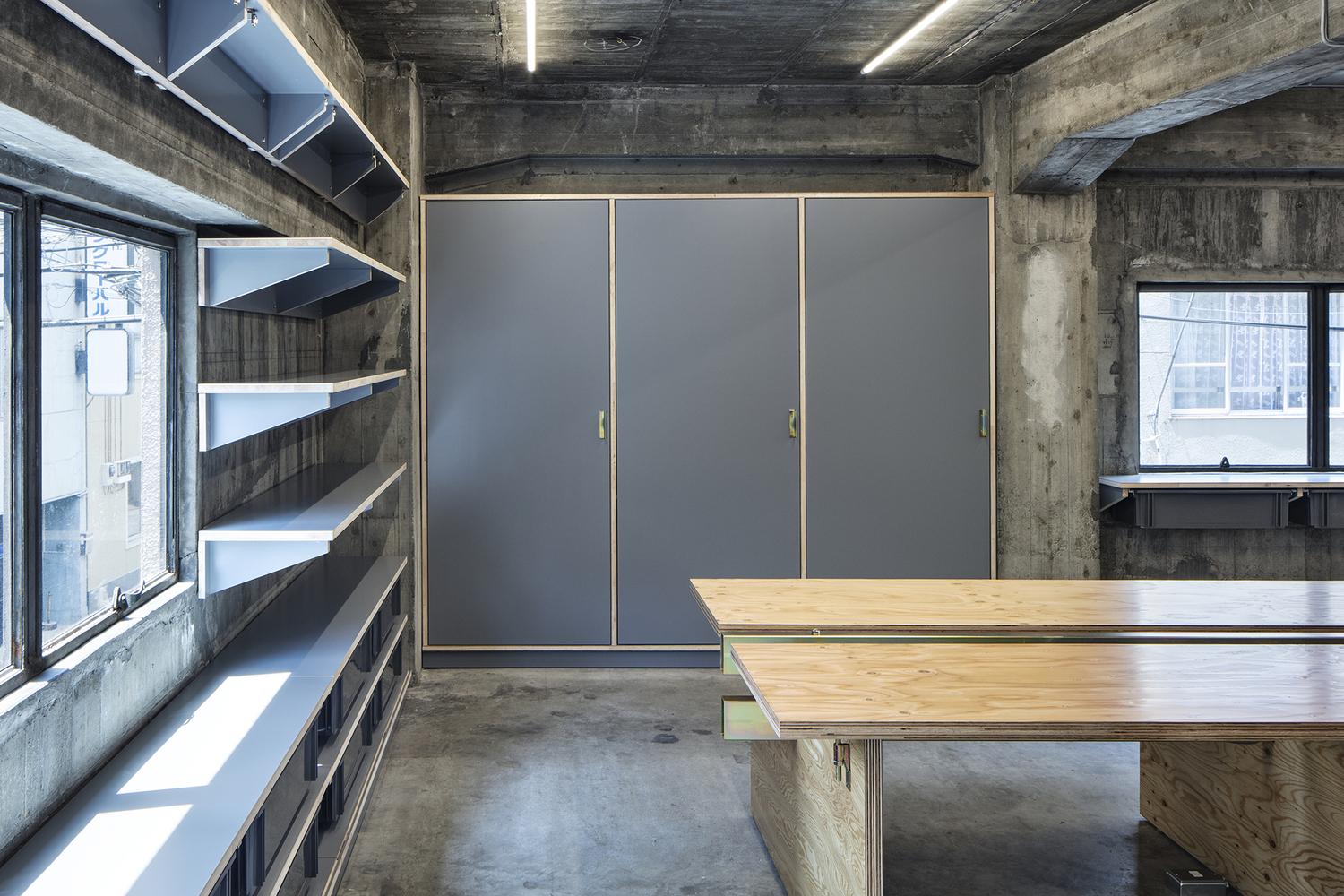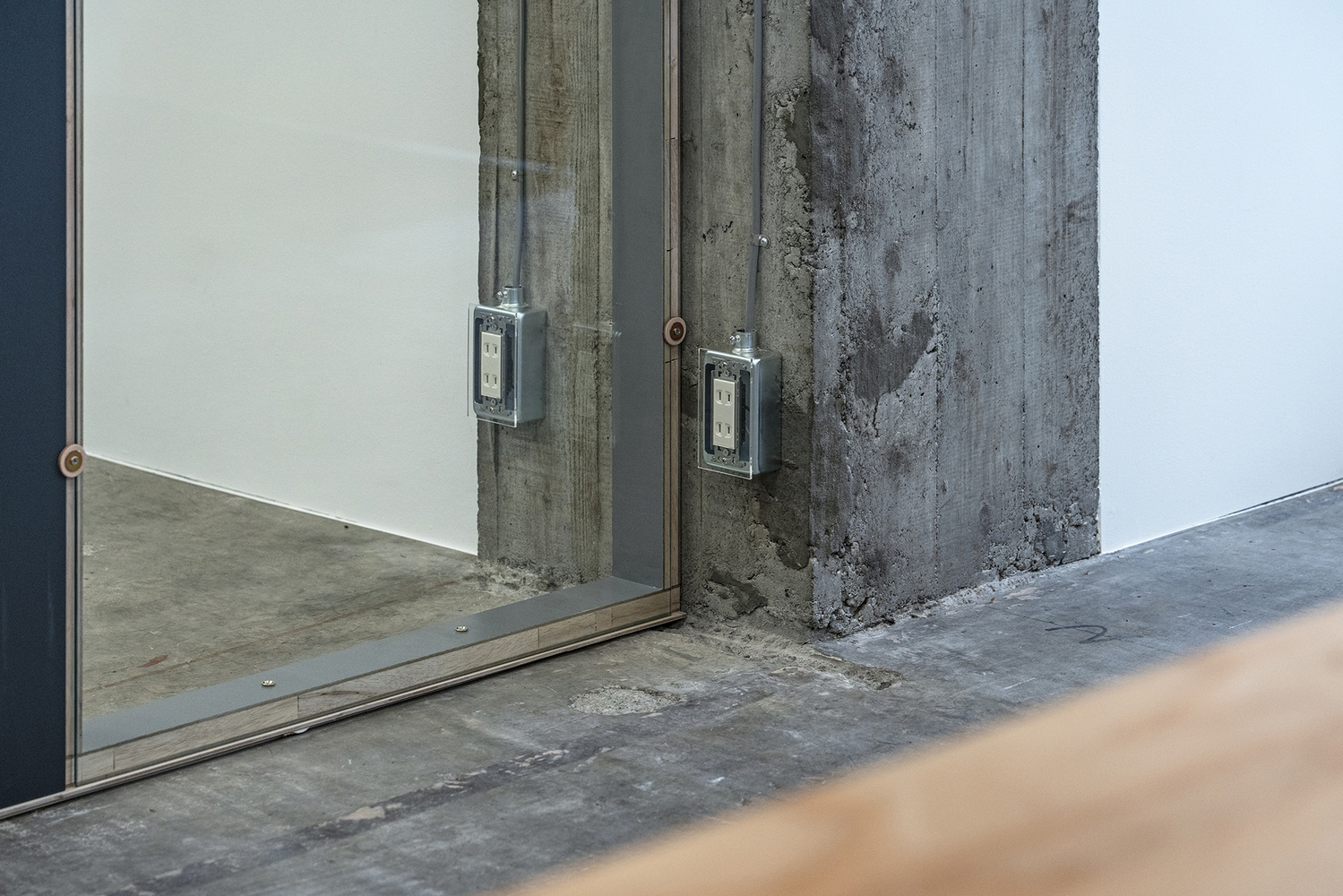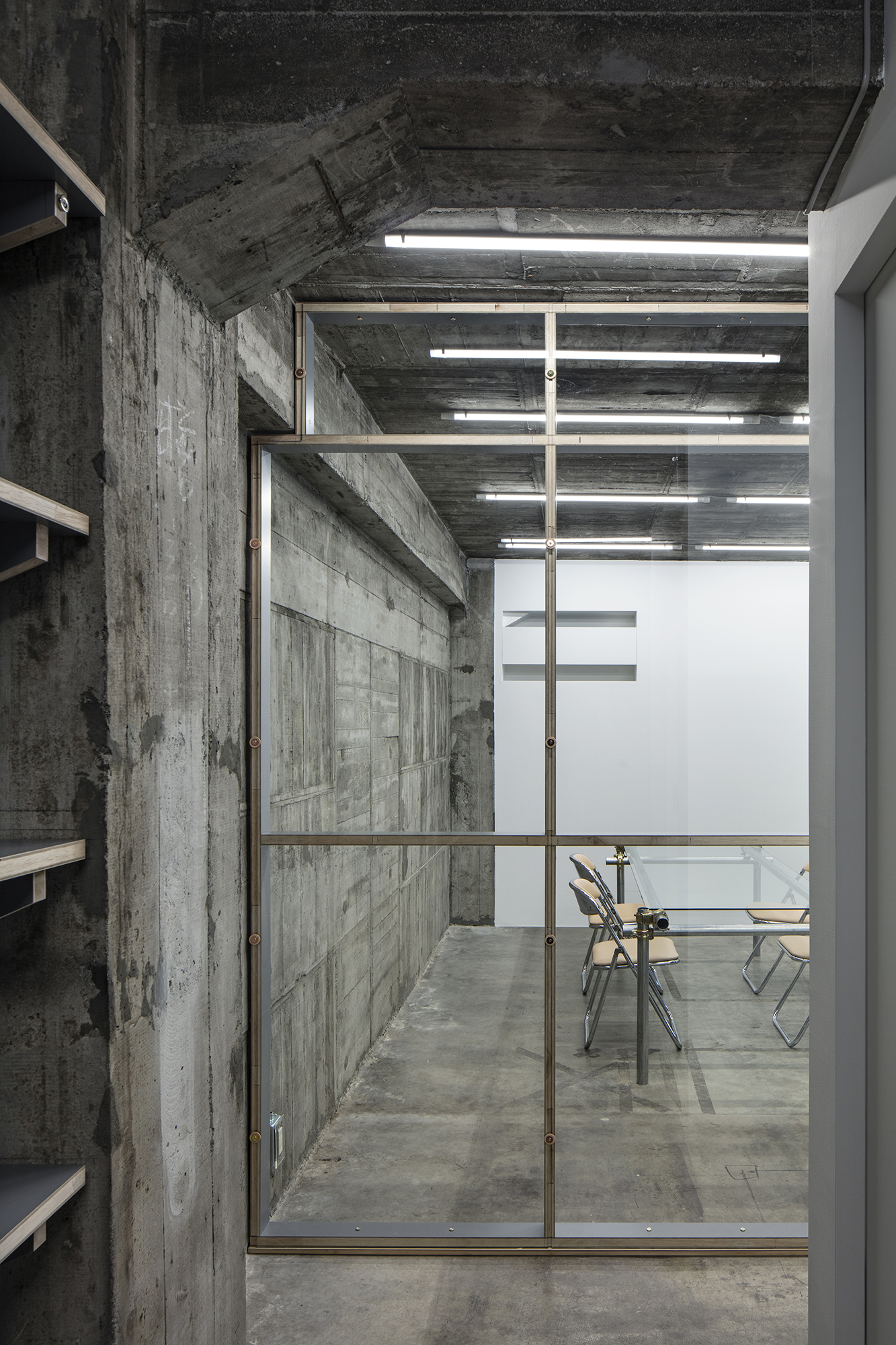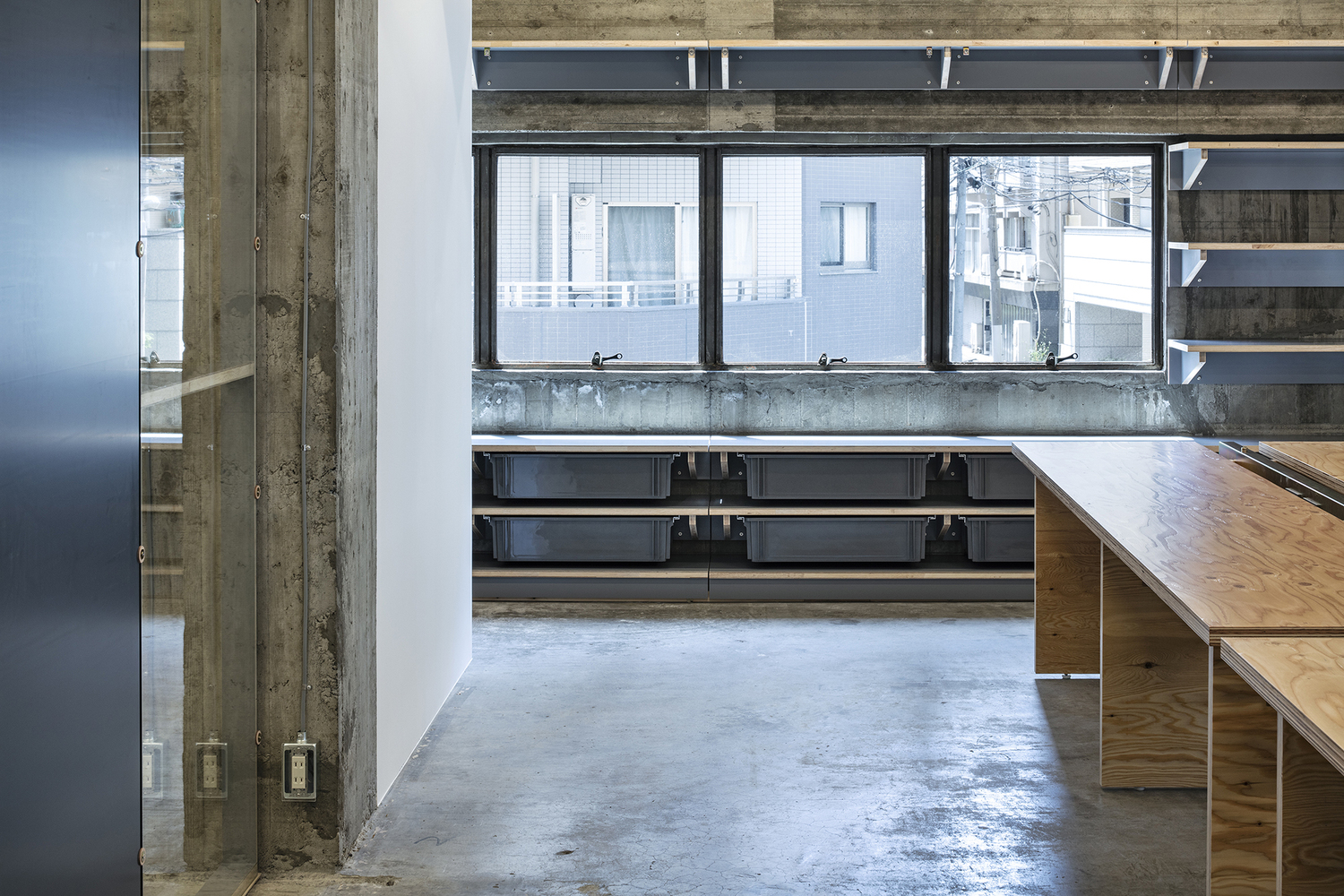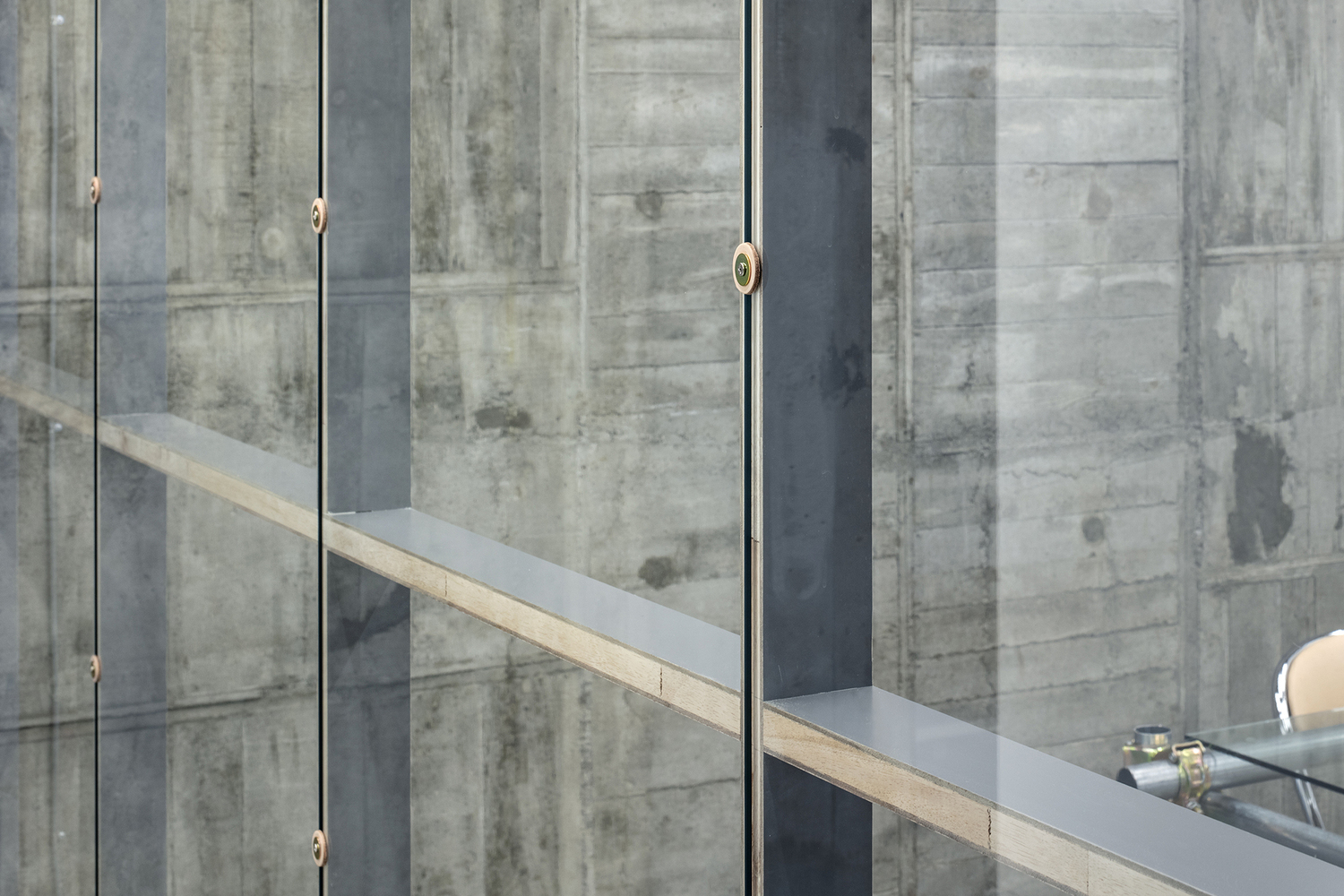Hender Scheme Kuramae is a minimal space located in Tokyo, Japan, designed by DDAA Inc. This project is to renovate an entire concrete building near Kuramae Station into a showroom and office for IaicoS, which operates Hender Scheme and Polyploid. There are a few simple, specific rules for this space. The first is to use raw-edged materials as they are without significant edge treatment except for deburring. The second is to use the colors of materials as they are as much as possible without color matching. The third is to treat opposites, such as craft/industrial, front/back, artificial/natural, and cheap/luxurious as equally as possible. The first two, “raw-edged” and “material color,” are DDAA’s interpretation of the characteristics of Hender Scheme’s vegetable-tanned leather, and the third is a rule inspired by their “way of making” that the studio felt in their creation. They wanted to create in a way that resonates with Hender Scheme’s creation, which are familiar everyday products such as ordinary boxes, envelopes, and simple packaging designed using leather through careful techniques. This is not only because of the rules they set, but also because they sympathize with the way they make and the attitude they take.
This is why the designers decided to leave the bare walls as they are as much as possible. Shelves and partitions around the walls are made of raw-edged gray poly lumber to accentuate the edges. One of the glass partitions separating the office and meeting room is a mirror, and the gray surface visible from the office is the back of the mirror used as a finish. Since the mirror and glass are the same thickness, raw edges of both materials were joined without seals along the edges like glass. The glass and mirror are fixed directly with screws using leather as washers. The exposed electrical wiring carefully laid out in the concrete walls is also held in place using raw-edged leather. The meeting space is furnished with a glass table on legs made of steel pipes for scaffolding and leather upholstered chairs by Hender Scheme. The shelves on the exterior wall side are usually used as open shelves for documents and can be blindfolded during biannual exhibitions.
The screens are made of raw-edged polycarbonate panels that can be attached and removed with magnets, without intricate detailing like fittings. They are lightweight and translucent with no oppressive feeling, and above all, they do not block the light from relatively small windows. The large table, which doubles as a meeting table by changing the layout, consists of large-sized structural plywood over 3m long. Since the material is mainly used to make structural members of buildings, the studio used hardware for conventional construction methods for wooden houses to fasten joints. Since the desk is only 700mm deep because of the size of the material, they made a slit in the center to provide space for power supply wiring. DDAA used raw-edged steel square pipes as longitudinal beams which provide space for wiring to electrical outlets.
Photography by Kenta Hasegawa
View more works by DDAA Inc
